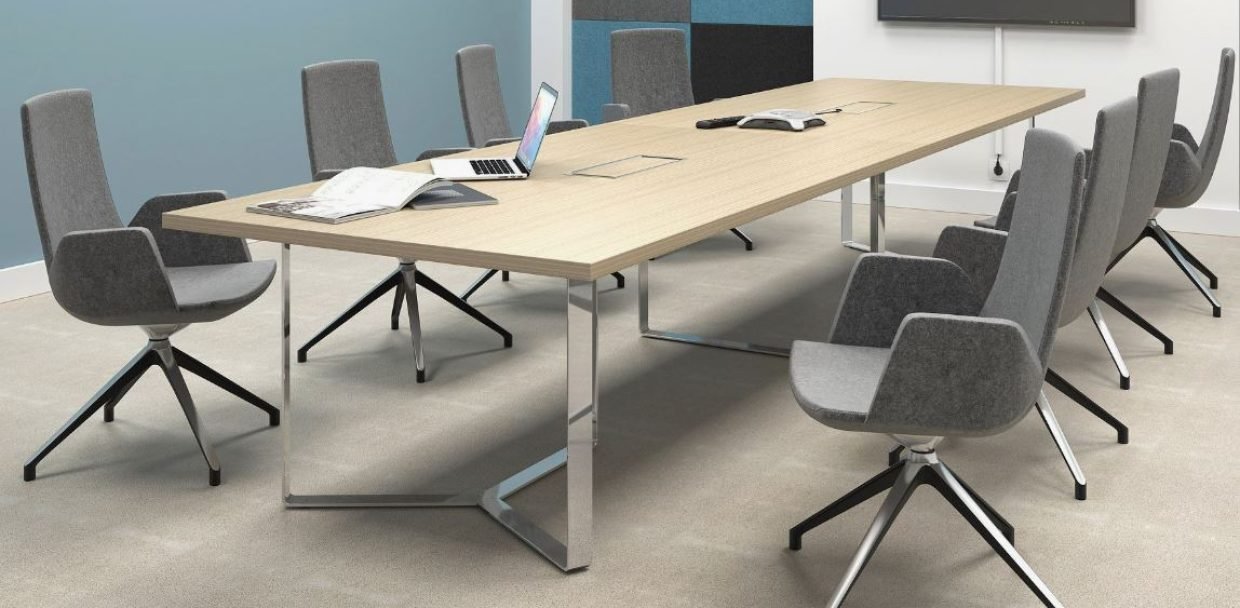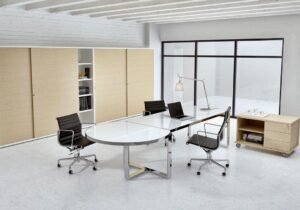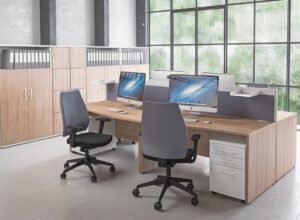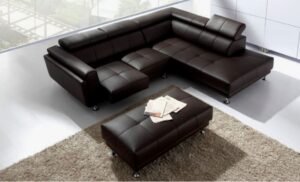In the modern workplace, collaboration and communication are more essential than ever. Open layouts, video conferencing, and hybrid work models are redefining how teams interact. Despite all these changes, one item remains a central point of productivity and teamwork—the Meeting Room Table. Whether you’re brainstorming creative ideas, holding client meetings, or conducting internal reviews, the right table can significantly influence the efficiency and dynamics of your meetings. It’s not just a piece of furniture; it’s the centerpiece of your conference room that supports interaction, encourages participation, and reflects the professionalism of your business. Choosing a suitable meeting room table should therefore be a strategic decision, not an afterthought.
How Meeting Room Tables Influence Collaboration and Productivity
A well-designed Meeting Room Table contributes more than just aesthetics. It affects body language, eye contact, communication flow, and even hierarchy within the room. A round or oval table, for example, promotes inclusivity and open discussion, while a rectangular table can reinforce structured hierarchy and give presenters a clear position of authority. When the table is too small, it may feel cramped and limit engagement. On the other hand, an oversized table in a small space can make the room feel overwhelming and impersonal. Therefore, the table’s size, shape, and placement should all be carefully considered based on your team’s needs and the room’s layout. By selecting a table that fits your culture and workflow, you help create a space where ideas can flow freely, and every team member feels heard and valued.
Factors to Consider When Choosing a Meeting Room Table
Selecting the right Meeting Room Table goes far beyond design preference. The key considerations include size, shape, material, functionality, and technology integration. First, assess the room size and how many people typically attend your meetings. This helps determine whether you need a table for six, twelve, or even twenty people. Then consider the shape: rectangular tables are most common, but U-shaped, boat-shaped, and round tables are also viable options based on your communication goals. Materials like wood, glass, and laminate each have their pros and cons in terms of durability, style, and maintenance. For example, solid wood tables exude luxury and class but require more upkeep, whereas laminate options are budget-friendly and easy to clean. Finally, modern meeting tables often come with built-in cable management systems, USB charging ports, and power sockets, making them ideal for tech-driven teams. Thinking through these aspects ensures that your chosen table supports both your current and future business needs.
Meeting Room Table Design Trends in Today’s Workspaces
As workspaces evolve to accommodate remote workers, in-person teams, and hybrid formats, Meeting Room Table design trends are also shifting. Sleek, minimalist designs with integrated technology features are in high demand. Tables with modular flexibility are becoming popular for companies that need to adapt their rooms for different functions. For instance, foldable tables, or those with detachable parts, allow businesses to reconfigure layouts depending on whether the room is being used for group discussions, board meetings, or training sessions. Sustainable materials are also gaining attention as companies aim to reduce their environmental impact. Bamboo, recycled metals, and responsibly sourced woods are increasingly being used in furniture manufacturing. Additionally, ergonomic designs that offer ample legroom, adjustable height options, and sound-absorbing table surfaces are setting new standards for comfort and functionality. Keeping up with these trends can help businesses present a modern, forward-thinking image to clients and staff alike.
Enhancing Meeting Room Aesthetics with the Right Table
Aesthetics play a crucial role in making a positive impression on clients and creating a motivating environment for employees. The Meeting Room Table serves as a visual anchor, so its design should align with the overall interior theme. For a minimalist office, a glass table with clean lines can add sophistication without overpowering the room. In contrast, creative firms might opt for custom-designed tables that showcase brand personality through bold colors or unique shapes. The table’s color and finish should complement the flooring, wall color, and lighting. Don’t underestimate how much visual harmony contributes to comfort and focus during meetings. Plants, artwork, and carefully selected chairs can further enhance the ambiance, but the table remains the central feature that ties everything together. When thoughtfully selected, your meeting room table becomes an extension of your brand identity and workplace culture.
Smart Technology Integration in Meeting Room Tables
Today’s meetings are rarely conducted without the use of laptops, tablets, smartphones, and video conferencing tools. As a result, Meeting Room Table designs are increasingly integrating smart technologies to enhance efficiency. Built-in power outlets, USB ports, wireless charging pads, HDMI inputs, and data ports are some of the features commonly available in modern tables. These conveniences reduce cable clutter and allow participants to stay connected and productive throughout the meeting. Some high-end tables even include touch screen controls, motorized height adjustments, or speaker integration. These tech-friendly features not only streamline meeting logistics but also demonstrate your commitment to innovation and professionalism. Investing in a technology-integrated table can significantly improve user experience and help you make the most out of every meeting.
Maintenance and Durability: What to Look For
Purchasing a Meeting Room Table is a long-term investment, so durability and maintenance requirements should not be overlooked. Tables made of hardwoods like oak or walnut offer exceptional longevity but may be prone to scratches and require regular polishing. Laminate surfaces are resistant to spills and scratches, making them ideal for high-traffic rooms or companies that hold frequent meetings. Metal frames provide sturdy support and are less susceptible to damage from movement or impact. Glass tables, while elegant, require regular cleaning to maintain their appearance. No matter the material, always look for stain-resistant and easy-to-clean surfaces to reduce upkeep. Checking for warranties and customer reviews can also guide your decision toward a reliable and reputable brand. Ensuring ease of maintenance will keep your table looking pristine and professional for years to come.
Final Thoughts on Choosing the Best Meeting Room Table
Choosing the right Meeting Room Table is about more than finding a table that fits in the room—it’s about enhancing collaboration, expressing your brand identity, and investing in long-term functionality. With the right size, shape, material, and technology features, your meeting table becomes a powerful tool that fosters productivity and makes a strong impression. Whether you’re outfitting a startup’s huddle room or upgrading a corporate boardroom, carefully evaluating your specific needs will help you find a table that supports your team and reflects your company values. A well-chosen table does not just serve meetings—it shapes conversations, decisions, and progress.






